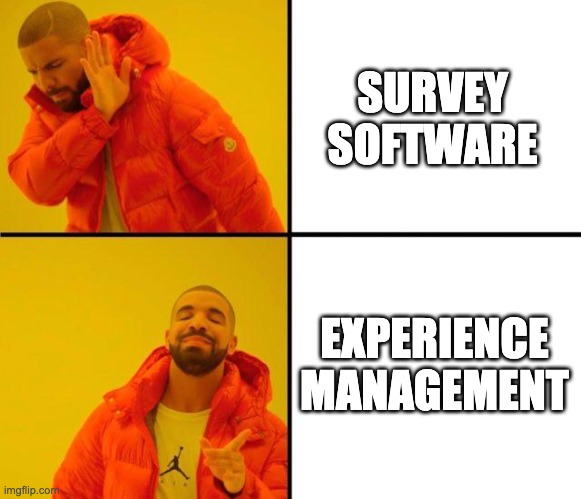
TL;DR
- This article was informed by exclusive interviews with over a dozen current and former early employees of Qualtrics and SurveyMonkey.
- They all told the same story—Qualtrics should’ve lost but somehow emerged victorious.
- By wielding a 3 pronged strategy of utilizing cheap Utah labor, gutsy product marketing, and aggressive GTM tactics, the company resoundingly beat SurveyMonkey.
- Their story acts as a warning to operators, the things that are popular among Twitter thought leaders are just the flavor of the moment, build the business you want and ignore everyone else.
- There is a reason almost all software companies are built on the back of outbound sales motions. It works.
What if I were to pitch you on a company that had the following attributes:
- Has multiple viral growth loops built into the core product workflow
- Has a 3-year head start over its competition
- Has some of the best technical talent available in California
- Has an active, global user base of millions
- Has deep integrations with Salesforce, Google, Microsoft, Slack, Tableau, Oracle, and basically every other major tech player
- Was entirely subscription-based for many years and has a small services arm started 6 months ago
This looks like a good company! It checks all the boxes that in vogue software investors look for. By having viral growth loops baked into the product, they dramatically decrease their cost to acquire a customer. An active user base fuels a bottoms-up growth method, similar to other software darlings like Slack or Atlassian.
The only problem? This company lost.
I am describing the runner-up of the survey software market—SurveyMonkey. Despite having everything that modern go-to-market (GTM) theory is built upon (growth loops, channel sales partnerships, and product lead growth) they failed and they failed hard. As of writing, they have a $2.8b dollar valuation in comparison to their top competitors’ $17.6b valuation.
Their foil, their nemesis, was the Provo, Utah-based Qualtrics. It is utilized by the majority of the Fortune 500, has had speakers like Oprah and Michelle Obama at its conferences, and has created its own software category. The one teensy, kinda weird detail is that their product capabilities are nearly identical to Surveymonkey.
How Qualtrics won and why SurveyMonkey lost is a fascinating story that teaches how investors and operators can generate great returns while ignoring what’s hot and instead doing things in a classic way.
A special thanks to my dozen+ sources at both of these companies who made this article possible.
This product is easy to make, so what do we do?
On its surface, surveys are boring. Upon closer inspection, they are still boring. There are essentially 3 things you need to make it work. The first layer is a survey maker tool. (Think of Google forms.) You create the questions, build a list of recipients, and ship it off. The second layer is visualizations. This is where you take the input from the survey and then put it into a chart so an MBA can understand what is going on. The final layer isn’t even technology, it is a services layer! This is where customers will hire professionals to design the survey, source audiences, and give presentations on results.
All of my engineering and product readers are squinting at that last paragraph and thinking, “Well shoot, I can build that.” And you would be right! While building things from scratch is never easy, you are not exactly doing rocket science here. This is not a technically demanding product to build or maintain. So with this in mind, what do you do?
SurveyMonkey decided to stay hyper-focused on the first layer. They built the survey tool, integrated it with every business intelligence or visualization tool on the planet, and then (because investors tend to shy away from COGS-heavy businesses) pretty much ignored the services component. They focused on making their survey tool as easy to use and as lightweight as possible. They hired high-end technical talent, and relentlessly focused on executing easy-to-use features and product-led growth. This playbook was their focus from their founding in 2003 to their IPO in 2018.
Here’s a chart they made for their S-1 that plots significant events in SurveyMonkey’s history against “Cumulative Registered Users”:
The Only Subscription
You Need to
Stay at the
Edge of AI
The essential toolkit for those shaping the future
"This might be the best value you
can get from an AI subscription."
- Jay S.
Join 100,000+ leaders, builders, and innovators

Email address
Already have an account? Sign in
What is included in a subscription?
Daily insights from AI pioneers + early access to powerful AI tools










Comments
Don't have an account? Sign up!
The title of this blog post feels misleading. SurveyMonkey went for a broad product positioning strategy without any focus on use case or segment. Qualtrics focused very directly on universities initially and then large enterprises, building a product with more focus as a result.
That is the defining difference - product led growth is simply how SurveyMonkey gets their product into the building (any building, from the looks of their GTM strategy). I wouldn't attribute the difference in each company's outcome purely to product led growth.
Great read!
I agree that it has nothing to do with the Product-Led Growth strategies SurveyMonkey is implementing in that they are still the leader in the serf-serve space as Qualtrics seems to be more focused on large enterprises, which is almost always more profitable in the B2B space.